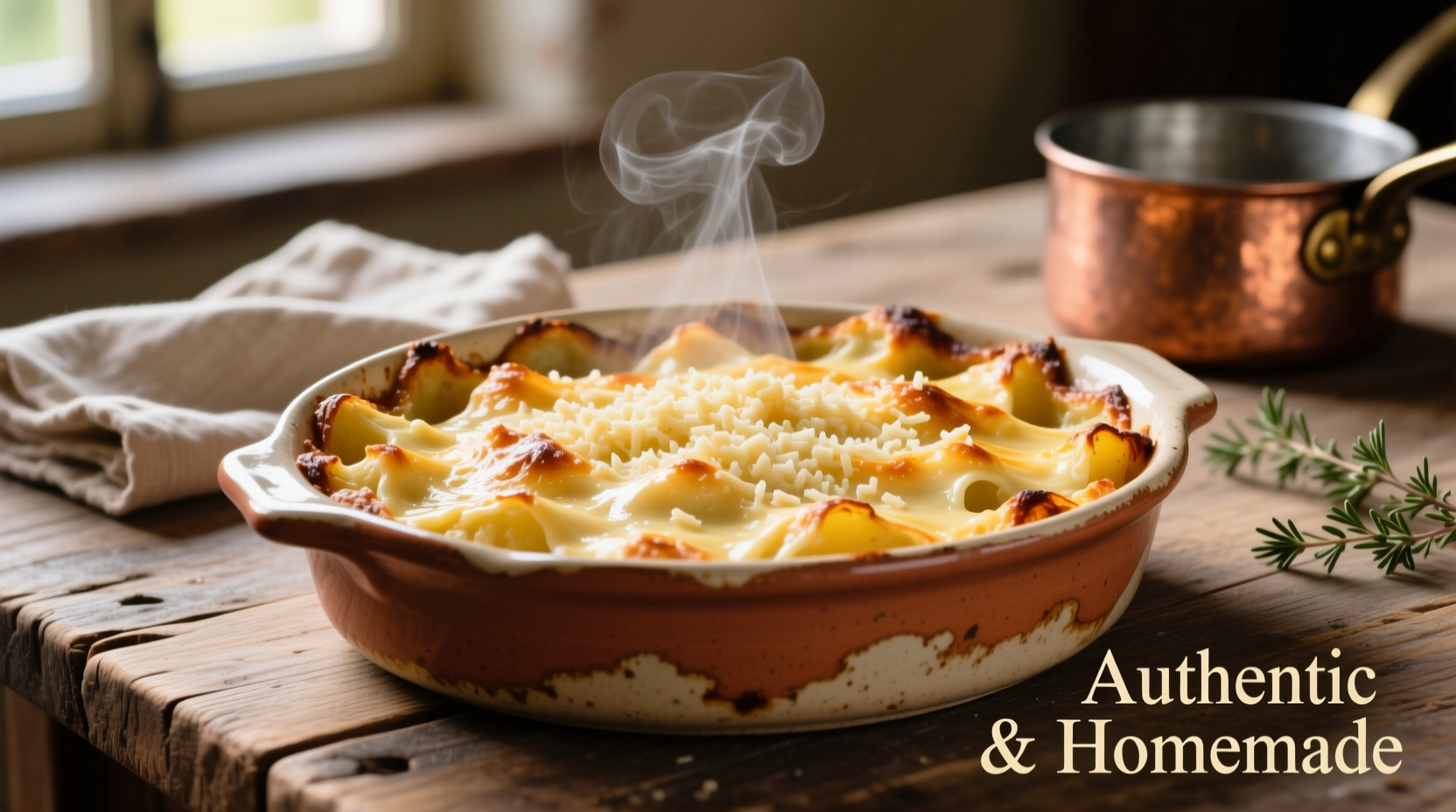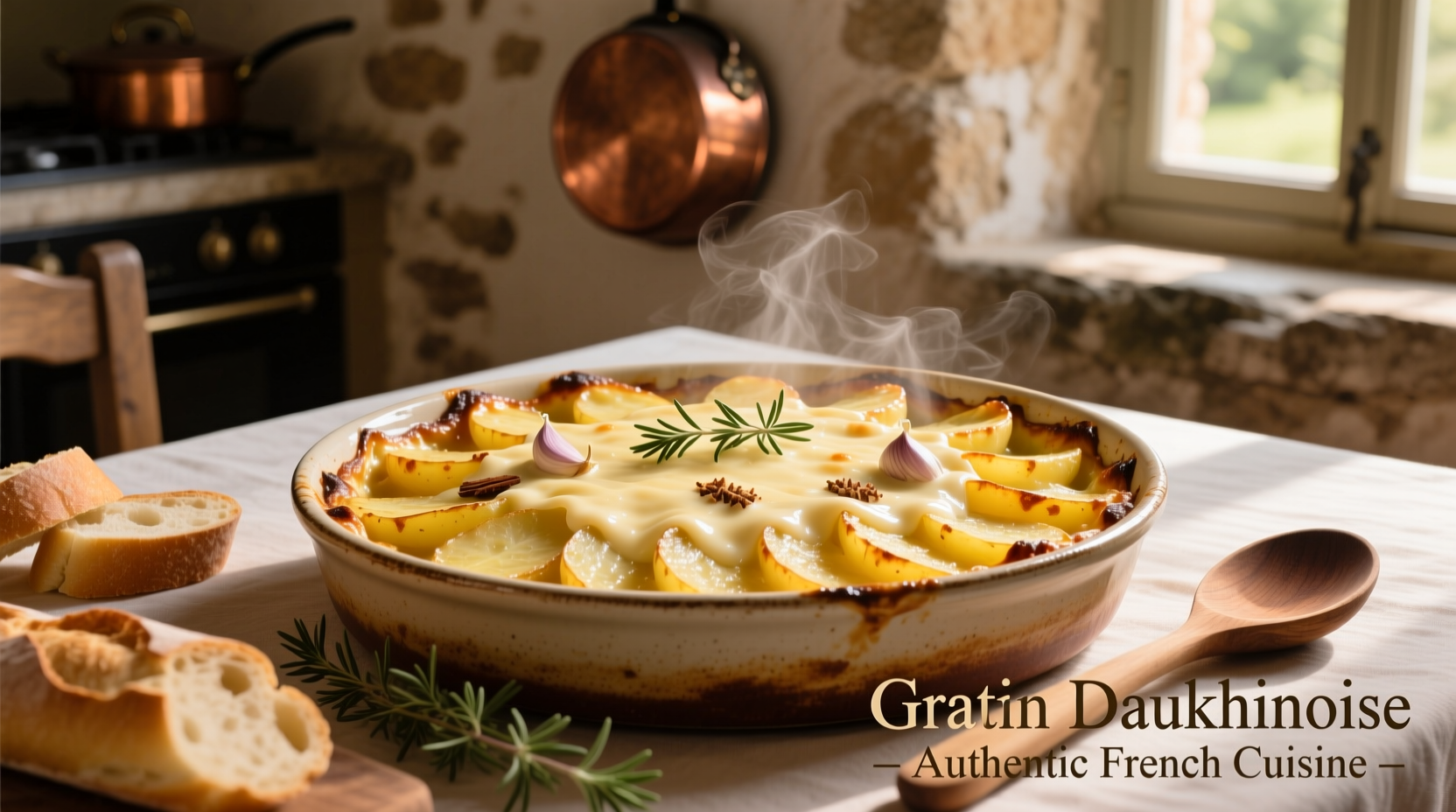The Origins and Evolution of Gratin Potato
Understanding gratin potato's history helps appreciate its culinary significance. While potatoes arrived in Europe in the 16th century, the gratin technique emerged later as French chefs developed methods to transform simple ingredients into elegant dishes.
| Time Period | Development | Key Influences |
|---|---|---|
| 1570s | Potatoes introduced to Europe from South America | Spanish explorers brought potatoes to Spain |
| 1700s | "Gratin" technique developed in French cuisine | Chefs used oven-browning to enhance simple dishes |
| 1830s | First recorded potato gratin recipes | Antonin Carême's culinary writings |
| 1900s | Global popularity through French culinary influence | Escoffier's Le Guide Culinaire standardization |
According to culinary historian Sophie Dubois, "The evolution of gratin potato reflects France's culinary philosophy—transforming humble ingredients through technique. Early versions were peasant food, but by the 19th century, it became a bistro classic."
Why Potatoes Matter: Selecting the Perfect Variety
Not all potatoes work equally well for gratin. The starch content dramatically affects texture and cooking behavior. Professional chefs consistently recommend specific varieties that maintain structure while absorbing flavors.
| Potato Variety | Starch Content | Best For Gratin? | Why It Works |
|---|---|---|---|
| Yukon Gold | Medium | ✓ Ideal | Balanced starch creates creamy texture without disintegrating |
| Russet | High | △ Possible | Absorbs more liquid but risks becoming mushy if overcooked |
| Red Bliss | Low | ✗ Not Recommended | Waxy texture prevents proper layering and cream absorption |
| Charlotte | Medium-Low | ✓ Excellent | Firm texture holds shape while absorbing flavors (French preference) |
Research from the International Potato Center confirms that Yukon Gold maintains structural integrity at baking temperatures between 325-375°F (163-190°C), making it the most reliable choice for home cooks. The ideal thickness for gratin slices is 1/8 inch (3mm)—thinner than many recipes suggest—which allows for even cooking without gaps in the layers.
The Science Behind Perfect Layering Technique
Professional chefs achieve consistent results through precise layering methods that address common failure points. The key is creating an environment where heat transfers evenly while allowing flavors to meld.
"Most home cooks make two critical mistakes," explains Sophie Dubois. "They don't properly season between layers, and they use cold dairy which shocks the potatoes. Always warm your cream mixture to room temperature before assembling."
Follow this professional sequence for optimal results:
- Blanch potato slices in salted water for 2 minutes (not in the dairy)
- Dry slices thoroughly on clean kitchen towels
- Layer with ¼ teaspoon salt per layer (critical for flavor penetration)
- Pour warm cream mixture (never cold) over assembled layers
- Cover with parchment paper during initial baking phase
- Uncover only when potatoes are nearly tender

Avoiding Common Texture Disasters
Three texture problems plague most gratin attempts, but each has a specific solution:
The Soggy Bottom Problem
Cause: Excess moisture from potatoes or cold dairy Solution: Blanch slices and dry thoroughly before layering. Use room-temperature dairy.
The Curdled Cream Problem
Cause: Acidic ingredients or excessive heat Solution: Never exceed 375°F (190°C). Add cheese only during last 15 minutes of baking.
The Undercooked Center Problem
Cause: Inconsistent slice thickness or improper layering Solution: Use a mandoline for uniform 1/8-inch slices. Rotate dish halfway through baking.
Professional Variations Worth Trying
While traditional gratin dauphinois remains beloved, these chef-approved variations add exciting dimensions without compromising authenticity:
- Herb-Infused Gratin: Steep thyme and bay leaves in cream for 30 minutes before assembling
- Truffle Elegance: Add ¼ teaspoon white truffle oil to cream mixture (not during baking)
- Provençal Twist: Layer with thin tomato slices and garlic between potato layers
- Cheese Selection Guide: Gruyère (traditional), Comté (nutty alternative), or Parmesan (for stronger flavor)
For gluten-free diets, traditional gratin potato requires no modifications as it contains no flour. The dish naturally accommodates dairy substitutions—whole milk with 2 tablespoons cornstarch creates similar texture to cream for lower-fat versions.
Serving and Storage Best Practices
Rest gratin for 15-20 minutes after baking. This critical step allows structure to set, preventing collapse when served. For make-ahead convenience, assemble completely but refrigerate before baking—add 20 minutes to baking time if starting cold.
Pair with roasted poultry or seared meats that benefit from the dish's richness. The classic French combination is roast chicken with garlic and herbs. Leftovers transform beautifully into potato gratin cakes when pan-fried the next day.











 浙公网安备
33010002000092号
浙公网安备
33010002000092号 浙B2-20120091-4
浙B2-20120091-4